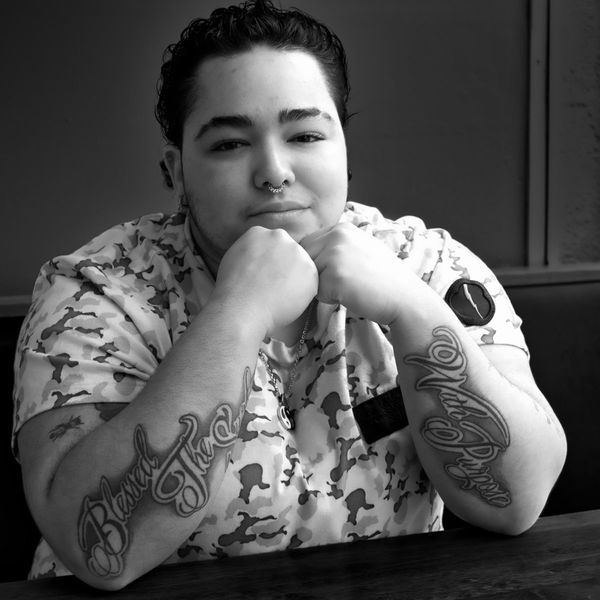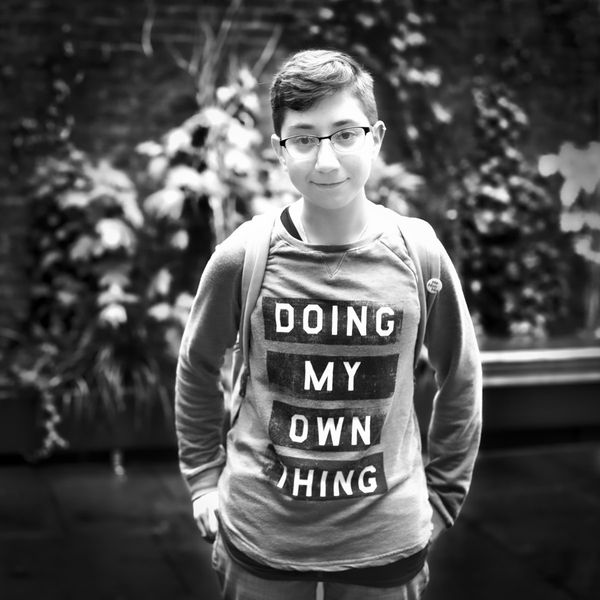I was 21 years old and living in France. I had just graduated from college and was living near Paris when the symptoms began. I didn’t understand what was happening to me. I had never heard of mental illness; I did not think mental health existed. All I knew was that I couldn’t control what I was feeling.
I couldn’t sleep; yet, I also couldn’t get out of bed. I just wanted to stay in the dark with the covers pulled over my head. I became highly sensitive to light and sound. I thought people who approached me were going to strike me, because I was bad and deserved to be hit. Nothing made sense.
I felt as though I was wearing a lead cloak. The weight of it was crushing, as was the sense of guilt and shame I felt for a failed relationship. Waves of panic would wash over me. I was positive I was being persecuted. This person from my past was going to find me and kill me—I was sure of it. Sometimes I felt as though I was floating above myself, watching myself. I would later learn that this was a severe sign of mental illness called dissociation.
I came back to the U.S. for urgent medical treatment. I was diagnosed with major depression and schizoaffective disorder, a condition characterized by a disconnect from reality which accounted for the paranoid delusions.
The diagnosis of depression caught me by surprise. I never saw it coming because I was completely ignorant about mental illness, as was everyone else in my life. Sure, I had been sad for a long time. I had immigrated to the U.S. at the age of 13. I did not adjust well as I just didn’t know how to make new friends. So I kept to myself, with my nose in the books.
I thought I would go through my entire life like that, feeling lonely and disconnected. For me, this was normal. It never occurred to me to ask for help because I didn’t think I had a problem. I just bottled up my emotions. But after eight years, it all came out in a dramatic implosion while I was in France.
My psychiatrist put me on an antipsychotic and an antidepressant, which worked to relieve my physical symptoms. But the emotional wounds took years to heal.
I went to therapy twice a week. I had a lot to say to my therapist and psychiatrist—things I never thought I could tell anyone else, because I didn’t think there was anyone I could count on. I trusted no one even though I had a support system and a caring family. I didn’t notice my support system, which is a big distinction. I still felt all alone.
Therapy saved my life. My therapist told me that many of the belief systems I had grown up with and internalized were not correct and were, in fact, hurting me. I had to be willing to accept that I may be wrong. I had to change.
For therapy to work, you have to be open to change. You have to accept that your way of thinking may be wrong and that your beliefs may be what is making you sick. You have to change your ways to make healthier choices if you are going to get better. I am proud to say that I changed.
In addition to therapy, I also needed (and still need) to take medication every day (and for the rest of my life). I will always have a chemical imbalance in my brain, and I am grateful for the medicines that exist to correct it. At first, I struggled with this dependency. I didn’t want to be dependent on medications. I didn’t want to depend on anything. But my blind psychologist taught me about dependency.
“Listen,” she told me. “There is nothing wrong with dependency. I cannot even pick out my own clothes or drive myself to work.” She had an assistant who did that. “I have this dog to lead my around.” She had a Seeing Eye Dog.
“I must depend on this dog and my driver to get me to work. Without them, I wouldn’t be able to do much. I depend on them and that is not a bad thing.” I started to see how by accepting her dependencies, my doctor was able to not only work, but be a very effective therapist. And her acceptance of her dependencies helped me accept mine.
I never again want to feel the way I felt in the throes of my depression, so I take my medication religiously and attend to my emotional health diligently. I do the work to take care of myself. But I don’t otherwise think about my mental illness, or, until recently, talk about it.
Even though I have been living with my mental health condition for 20 years, I only recently learned about NAMI and their resources when doing some online research. I signed on to be trained for their presentation programs and have become a speaker in the NAMI Ending the Silence and NAMI In Our Own Voice educational programs.
The more I talk about my mental health conditions, the less I fear other people’s judgement and the more I realize the power my example may offer to others. I feel I am making a meaningful impact. The more visible examples of people living well with mental health conditions, the less the associated stigma will be and the more people will be willing to get help early.
I don’t know if I am unique, but I don’t feel limited in any way by my mental health condition. I lead a full life. So, I have moved on to the next phase of my recovery: advocacy. I’d like to be an example of how a diagnosis of mental illness does not have to be devastating. It can be a turning point to a better, self-examined life.
After recovering from a major mental breakdown at the age of 21, Melisma Cox earned two master’s degrees and served as a Fulbright Scholar.








